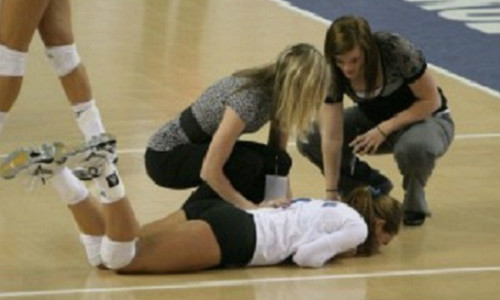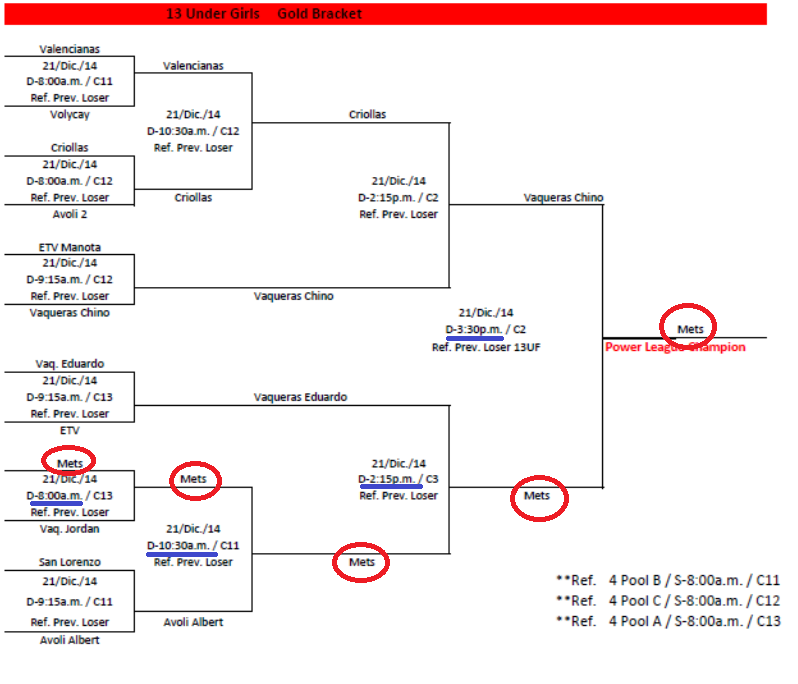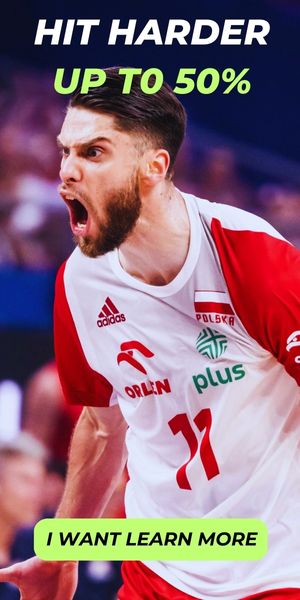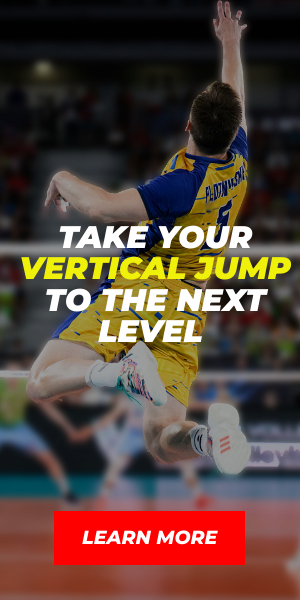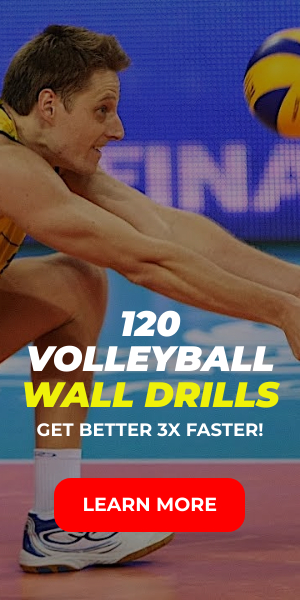When coaches take Youngsters to volleyball tournaments, the coaches themselves have to know the real situation that the players are going to participate in.
In Puerto Rico there are the Jeep Volleyball Championship& Power League while d in North America the Jr. Nationals among others/ Coaches must be careful by deciding where to participate because some of these tournaments have the sole purpose of making money.
In addition to being expensive, these activities are intended to meet with a program whose number of parties is absurd. (During just one weekend a team can play between 5 and 8 games, two out of three sets each one of 25 points and the decisive third of 15 points). Such matches definitely exposed young athletes to overuse injuries.
Note in the photo, the Mets team, who went to the final game in the Power League EastCoast Volleyball Championship. This female team plays on 13U category and played 4 matches on Sunday starting at 8:00 am, 10:30 AM, 2:15 PM and 3:30 pm, after already having played three matches on Saturday (9:15 AM, 11:45 am and 2:15 PM. These tournaments are approved by the parents who pay a large sum of money (but it seems that they don’t know nothing about at what level of stress are their children exposed to). The Federation of Puerto Rican Volleyball and coaches that lend themselves to this “exhausting sport massacre” also approve such competitions..
Day 1 (Saturday) & Day 2 (Sunday):
*Overuse injuries are difficult to diagnose because the pains caused by repetitive microtrauma often go unreported or are overlooked by the athlete during the initial progression of the injury. Many athletes ignore minor aches and pains because they are subtle and minimally affect function in the initial stages. Teaching athletes to recognize and report any small aches or pains is the first step in reversing and preventing the development of an injury. Particularly in young athletes, an undiagnosed injury often leads to a more severe injury down the road.
To better understand this concept, consider a 14-year-old female volleyball player. She is in her second year of playing volleyball at high school and plays for a club team during the off-season. She jumps anywhere from 25 to 100 times per practice, five times a week during her high school season, and two times a week during her club season. She begins to notice soreness in her shins after practice but thinks nothing of it because it’s not affecting her play.
This volleyball player is suffering from an overuse injury commonly known as shin splints. Her shin splints are in the initial stages, resulting from repetitive small tears in her shin muscles. If she continues to ignore the injury, the damage to her shins will increase, eventually restricting her movements and physical capabilities, if not benching her completely.
Overuse injuries are a rapidly growing concern among youth athletes. Every year 3.5 million children under the age of 14 are treated for sports injuries, and among middle school and high school athletes half of them are overuse injuries.
Unfortunately, the rate of overuse injuries is climbing while the
average age of children afflicted with overuse injuries is decreasing. In the past 10 years, there has been a fivefold increase in the number of severe elbow and shoulder injuries in youth baseball and softball players alone. (Remember that in Volleyball elbows and shoulders works hard too. This is a growing epidemic that cannot be ignored.1
Taken from: http://www.stopsportsinjuries.org/files/coaches_curriculum_toolkit/AOS-103%20Coaches%20Curriculum%20Toolkit%20%28nm%29%202.8%5B1%5D.pdf
“To make” the situation worse in this type of activity the organizers of a tournament demand that the Coaches present their certificate of coaching (at least Level 1). Specifically, this level 1 course emphasizes from page 197, the item “Injury Prevention”.
But apparently, this section is being overlooked in an irresponsible manner since it seems that certain interests are on the health and development of the athlete.
I wonder: What knowledge about training, physical development and competitive have these organizers so that they require from coaches a certificate to be able to address in the activity, but at the same time how is it possible that these certified trainers lend themselves to such vile act?
And while I am wondering maybe another child is exposed to a future overuse injury…

